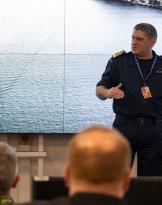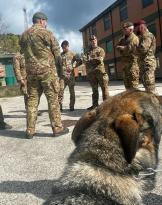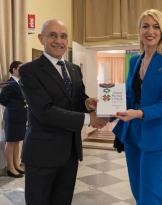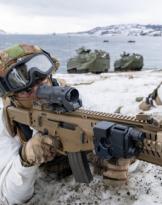In recent days, important reclamation activities were completed by divers of the Underwater Command and Incursors (Comsubin), assigned to the SDAI Nuclei (Demining Defense Anti-Insidious Vehicles) of La Spezia and Naples, with the support of the ship Anteo, who intervened respectively off the coast of Follonica and Banco Miseno (NA) for the reclamation of various unexploded artifacts dating back to the Second World War.
Specifically, the SDAI Group of La Spezia reclaimed the seabed of Follonica following the discovery, at about 20 meters deep, of German "GG" type magnetic-influenced bottom mines, containing over 700 kg of hexanite, a powerful explosive used by the Germans during World War II in their underwater weapons. This extraordinary discovery took place in the context of the "Cerboli Pulita" operation - which already involves the operational assets of Comsubin and the Naval Team in support of the Civil Protection - aimed at the search and recovery of secondary solid fuel eco-bales (CSS) dispersed in the gulf of Follonica in 2015. During the mapping phases of the seabed, contacts were in fact identified which initially hypothesized as eco-bales were then revealed, following the inspection conducted by the Navy divers, to be bottom mines.
At the same time, the SDAI Nucleus of Naples in competition with the Anteo Submarine Rescue Unit whose team of divers has been integrated with an aliquot of operators from the Underwater Operational Group (GOS) of the Underwater Command and Incursors of the Navy (COMSUBIN) , have carried out delicate underwater operations and EOD (Explosive Ordnance Disposal) in the waters of Banco Miseno, aimed at guaranteeing the territorial continuity of the islands of Ischia and Procida with the port of Pozzuoli and where there is a consistent presence of various remnants of war. The operations made it possible to find large quantities of large, medium and small caliber bullets and numerous containers of "butterfly" anti-personnel mines.
 The ordnance reported by sports divers lay at depths between 36 and 45 meters; divers then intervened at depths greater than 40 meters thanks to the Anteo ship's hyperbaric systems which ensured adequate safety support for such deep and prolonged dives.
The ordnance reported by sports divers lay at depths between 36 and 45 meters; divers then intervened at depths greater than 40 meters thanks to the Anteo ship's hyperbaric systems which ensured adequate safety support for such deep and prolonged dives.
All the remnants of the war found, placed in special containers and recovered with lifting balloons, were subsequently towed and placed in the safety area identified by the competent Maritime Authority, where the consolidated procedures, in use by the divers of the Navy, were implemented. preparatory to the subsequent phase of neutralization of explosive devices.
The localization, recognition and removal operations, carried out by the operations managers, were carried out while preserving the marine ecosystem and without causing damage to property and people.
It is good to remind anyone who finds objects that, due to their shape and size, can recall an explosive device or parts of it, that these artifacts can be very dangerous and therefore must not be touched or tampered with in any way, immediately reporting the discovery to the local Harbor Office. of Porto or to the nearest Carabinieri station, so as to allow the intervention of the Navy divers in order to restore the safety conditions of our sea, lakes and rivers.













